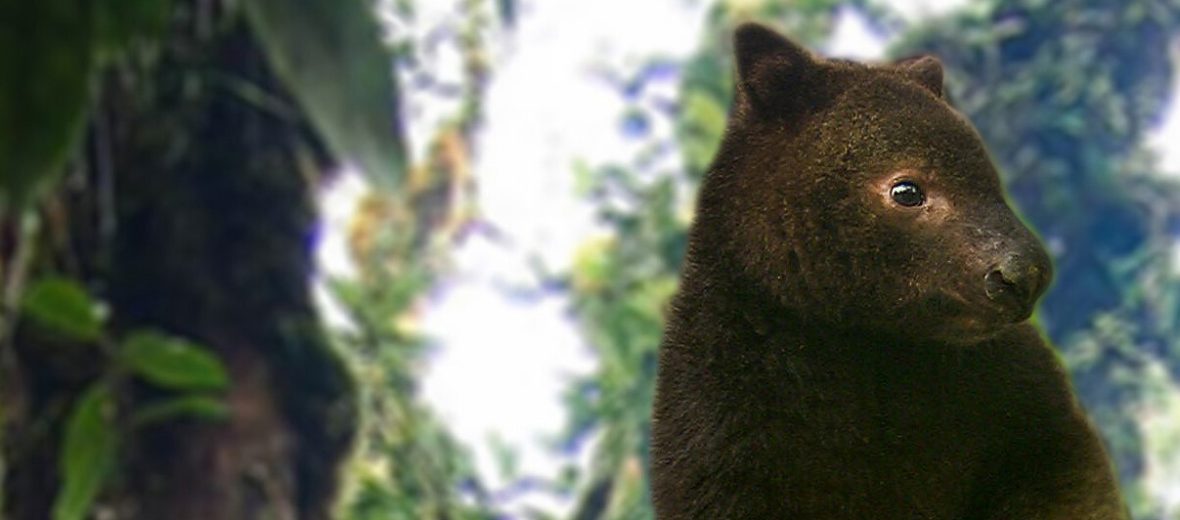
The tenkile, aka Scott’s tree kangaroo, can only be found in a small area of the Torricelli Mountains of Papua New Guinea. These critters prefer mid-mountain rain-forests that contain Araucaria, Libocedrus, Podocarpus, and Rapanea. Due to habitat loss at the hands of residential and commercial developments, as well as extensive logging; hunting; and trapping for the illegal pet trade, these cool creatures are listed as Critically Endangered by the IUCN. As of 2015, there are only an estimated 200 wild individuals remaining. However, their population seems to be stable.
First the Stats…
Scientific name: Dendrolagus scottae
Weight: Up to 22 lbs.
Length: Up to 26 inches, plus up to a 29 inch tail
Lifespan: Unknown, but presumed up to 20 years
Now on to the Facts!
1.) Tenkiles are a species of tree kangaroo in the family Macropodidae.
2.) These tree kangaroos produce a very strong body odor.
3.) This species of tree kangaroo is touted as being among the most intelligent of the 14 known species.
4.) While some locals state these marsupials have been seen in groups of up to 4 individuals, they are mostly observed as a solitary individual.
5.) Communication presumably takes place in the form of scent marking and vocalizations.
But wait, there’s more on the tenkile!
6.) As the name suggests, they are primarily arboreal (spend their lives in trees).
7.) Ferns, tree leaves, and soft vines are all on the menu.
Did you know…?
For now, a moratorium on hunting has been arranged with the local people in the Swelpini region. It is hoped that this will give these roos a chance to bounce back from near extinction.
8.) It is assumed that females undergo up to a 30 day gestation (pregnancy). At which time her single joey migrates to her marsupium (pouch) to continue developing.
9.) Joeys are known to spend up to 2 years with their mother before becoming independent.
10.) These tree kangaroos dwell at altitudes of up to 5,600 feet above sea level.
Now a Short Tenkile Video!
This video talks about tree kangaroos in general.
Be sure to share & comment below! Also, check out the Critter Science YouTube channel. Videos added regularly!
Want to suggest a critter for me to write about? Let me know here.



